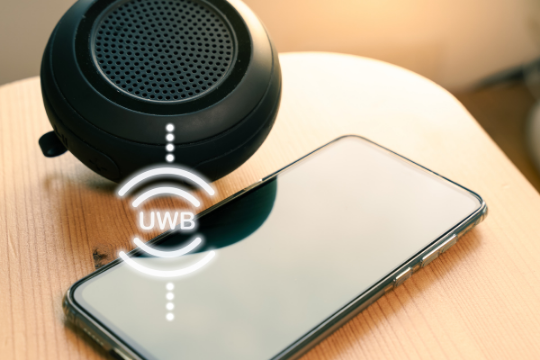 The new series of technology is becoming more and more prominent in our society. The introduction of Ultra Wideband (UWB) has revolutionized the way we do things. This technology is used in different types of applications, and can be utilized in a variety of conditions such as strong magnetic fields, high-speed environment, or in harsh conditions.
The new series of technology is becoming more and more prominent in our society. The introduction of Ultra Wideband (UWB) has revolutionized the way we do things. This technology is used in different types of applications, and can be utilized in a variety of conditions such as strong magnetic fields, high-speed environment, or in harsh conditions.
In the short term, while standards for UWB operation continue to evolve, we will see devices that comply with various aspects of these standards – operating at different power levels and using different transmission modes. It is useful to understand some of the issues raised by UWB operation in order to avoid problems when deploying systems containing UWB devices.
If you are looking to incorporate UWB into your business, here are some factors to consider before embarking on this journey.
Factor #1: UWB Data Transmission Is Highly Susceptible to Interference
UWB works by sending a large number of evenly-spaced pulses over very short time periods. This high density of pulses enables the UWB device to carry more information per unit time than traditional wireless technologies. It also means that in each pulse, there are many opportunities for outside interference sources to jump into the communications channel and corrupt the signal. And since conventional digital receivers can not tolerate any missing or altered bits, it follows that these kinds of random (and generally small) errors can be quite disruptive to UWB systems.
Factor #2: Power Levels Will Affect How Much Interference You See
Based on some studies that have been done with early implementations of UWB across a variety of frequency bands, the amount of interference that UWB can cause to traditional wireless technologies is quite significant – roughly 20 times greater than traditional digital technology when transmitting at equal power levels. Because of this, it is important that UWB devices are operated at the lowest possible power level in order to minimize interference and maximize overall system performance.
Factor #3: Bandwidth Is Another Key Issue To Consider
Interference from UWB comes in the form of energy across a broad portion of the frequency spectrum, and can therefore be difficult to filter out. Since there are frequencies present that are traditionally unused in most commercial wireless devices, this means that an effective tool for mitigating interference is a band pass filter. Some early implementations of UWB have used digital signal processing (DSP) techniques on analog signals at various points in their communication infrastructure as well. In addition to using DSP, some data rates allow signaling with multiple channels in parallel, which helps mitigate the impact of interference further by eliminating any one channel’s contribution when only one or two channels are affected. At least for these bands, a fairly good level of interference rejection can be achieved with dual channel systems (and possibly triple channel in the future) – but at a cost of roughly twice as much digital hardware.
Factor #4: UWB Is Subject to FCC Regulations for Spectrum Usage and Control
In addition to potentially high levels of interference, since UWB operates in part on a spectrum that is traditionally unused, it will also need some sort of regulatory approval to ensure system compatibility and control. The FCC is currently drafting new rules for UWB that will outline sharing requirements and other important factors regarding the deployment of UWB devices.
Factor #5: UWB Is a Relatively New Technology, and May Require Hardware Changes in Some Situations
While there have been several different implementations of UWB radio chipsets available over the last few years, there are still many more options to come in terms of commercial solutions. The nature of this technology requires some fairly precise timing by both the transmitter and receiver, so it will be interesting to see if the existing industry standards are adopted for use with UWB – or not. There is also a consideration that the wide bandwidth of these devices might induce interference into other systems that would otherwise work fine on single-channel products – but time will tell as we begin to see products released on an ongoing basis.
As mentioned previously, UWB is a technology with the potential to deliver tremendous value across a variety of markets. The ability to deploy high data rate solutions that do not suffer from multipath interference or other issues related to wireless in general is certainly an attractive proposition for a wide range of applications. On the other hand, however, there are some challenges that must be overcome before UWB can be deployed without concern of interference or regulatory issues. As a result, it is important to start thinking about these factors up front when you begin planning how to implement UWB into your network design.
Sunvera Software develops next-level software applications from start-to-finish. We are a premier software and mobile app development agency specializing in healthcare mobile app development, custom mobile app development company, telehealth software, sales dashboards, custom mobile app development services, retail software development, supply-chain software, ecommerce, shopify, web design, iBeacon apps, security solutions and unified access software.
We are proud partners with Amazon AWS, Microsoft Azure and Google Cloud.
Schedule a free 30-minute call with us to discuss your business, or you can give us a call at (949) 284-6300.

